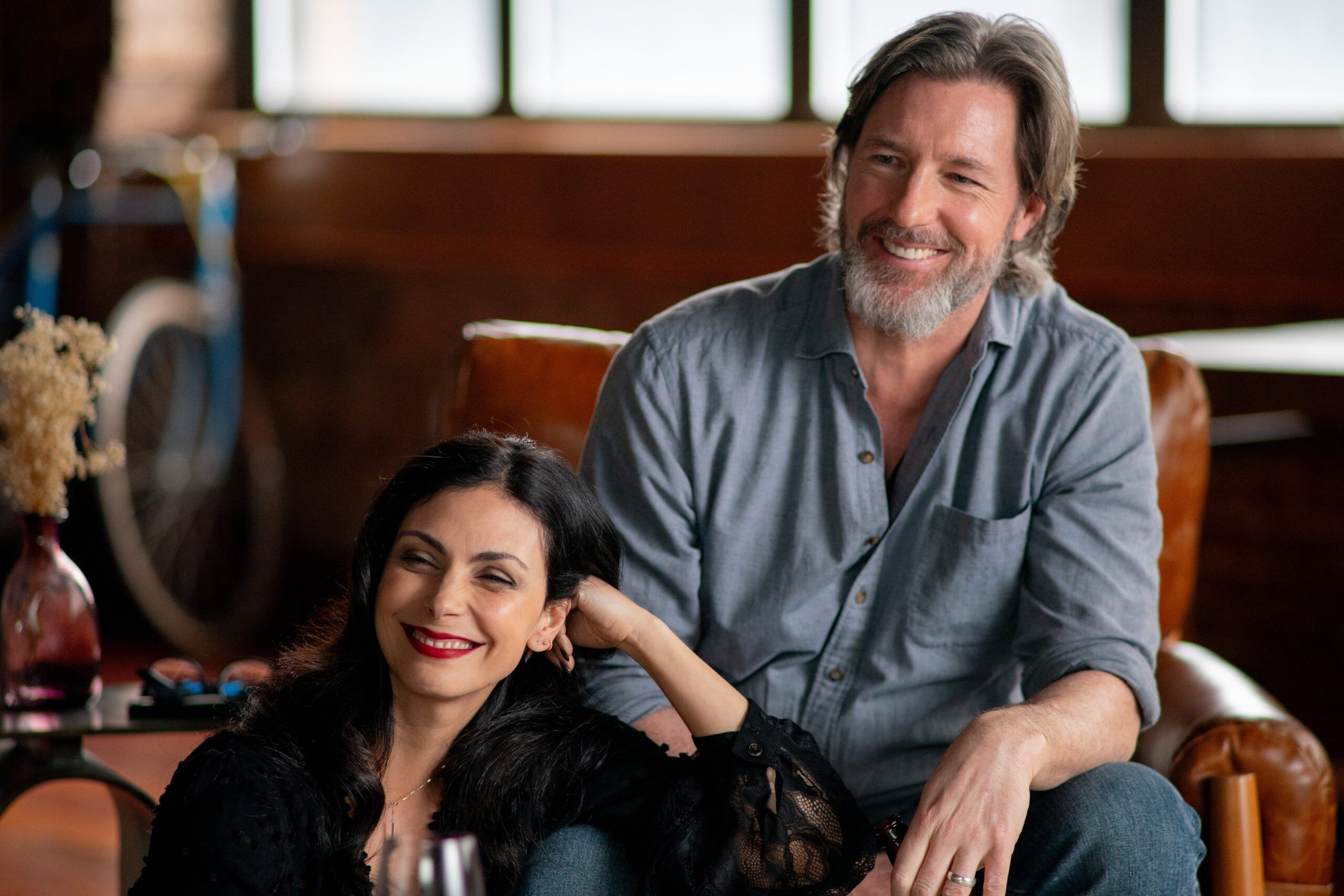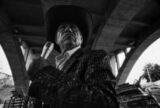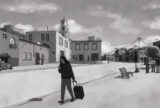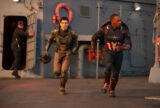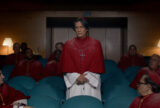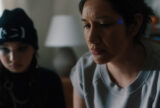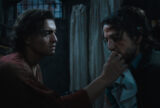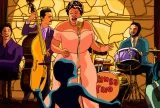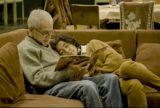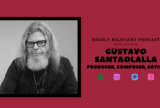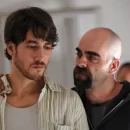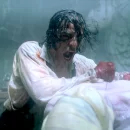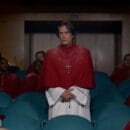12.11.2012 | By Karen Posada |
It’s been almost 10 years since ‘The Lord of the Rings: The Return of the King’ premiered and now finally the prequel to ‘The Lord of the Rings’ is here, ‘The Hobbit: An Unexpected Journey’ will open in the United States this Friday December 14. This one will be followed by ‘The Hobbit: The Desolation of Smaug’ to open December 13, 2013 and then, ‘The Hobbit: There and Back Again’ July 18th 2014. In this first part, we will join young Bilbo Baggins (Martin Freeman) in his first adventure with some new faces such as Thorin (Richard Armitage) the Dwarf King of Erebor and the rest of the twelve dwarves, whose kingdom has been taken away by a dragon named Smaug. Familiar faces accompany us on the trip such as the wizard Gandalf the Grey (Ian McKellen) and they will bump into Goblins, Orcs, Giant Spiders, Sorcerers and even Gollum (Andy Serkis) among others. In this journey he will discover himself as well as the wanders that the world outside of The Shire has to offer.
This first chapter of ‘The Hobbit’ has gotten a lot of buzz for obvious reasons, especially because of the High Frame Rate, shot at 48 frames per second. Director Peter Jackson clued us in as to what this means for the audience as well as other details about the film and the cast: Martin Freeman, Richard Armitage, Ian McKellen, Andy Serkis and Elijah Wood spoke about the new film and what we can expect.
ShowBizCafe (SBC): Why did you decide to make this film at 48 Frames, instead of the standard 24 Frames?
Peter Jackson (PJ): I think 3D at 24 Frames is interesting, but it’s the 48 that actually allows 3D to achieve the potential it can achieve because it’s less eyestrain and you have a sharper picture, which creates more of a three-dimensional world. It’s interesting how the 3D frame actually changes the perception of 3D as well as making it more comfortable to watch. With 3D both of your eyes are seeing a different picture, because the two cameras are filming two different pictures at different angles and with 24frames you’re getting scrubbing and motion blur and the artifacts of 24 frames and those are being shot separately with cameras being fit into separate eyes, your brain is trying of sort of put these stuff together, 48 reduces all the artifacts, makes for a smoother experience, it’s different.

I had an experience with it about 2 or 3 years ago, I directed a King Kong attraction for Universal Studios in California; which was 60 frames a second 3D, like a 7 or 8 minute film…I just thought, “wow this is so cool, I wish we could do a feature film like thisâ€. But of course while there were mechanical projectors in the cinemas around the world, they were locked into 24 frames and it was just an infrastructure since the 1920’s that existed that were never going to change. The advanced digital projectors allowed all this development to happen and the editor that I worked with went to NAB (technical convention) and he said, “you know what? If you’re interested in High Frame Rate I think the moment and time has arrived, because the projector manufacturers can probably do it and the cameras are going to be able to do it.†So we decided to take the plunge! The first day we started shooting ‘The Hobbit’ at 48 Frames you could probably say there wasn’t a single cinema in the world that could project the movie in that format; so it was a little bit of a leap of faith.*laughs*
The thing to realize is that this is not an attempt to try to change the film industry; it’s another choice. The projectors that run at 48 frames can run in 24 frames as well. It doesn’t have to be one thing or the other, you can shoot a movie in 24 frames and have sequences in 48 frames or 60 frames within the body of the film, you can still do all of the effects, ‘Saving Private Ryan’. It doesn’t necessarily change the way films are going to be made but it’s another choice that filmmakers have got and for me it gives that sense of reality of permissiveness that it makes you feel like you’re leaving the cinema seat to actually become part of the experience of the adventure in the film.

SBC: Guillermo Del Toro was directing this film at first, why weren’t you directing it?
PJ: I thought that I wouldn’t enjoy it. I thought I’d be competing against myself to some degree and I thought it would be interesting to have another director and Guillermo del Toro was involved for over a year probably. Because of the delays we were facing it still was another six months before we got a green light after he left. During that period of time I just thought I am actually enjoying this a lot more and I’d been working on the script with Guillermo over that time and we’ve been producing it for him. Also, I came to realize that there’s a lot of charm, a lot of humor in ‘The Hobbit’ that ‘The Lord of the Rings’ didn’t have and I thought that returning to Middle Earth and telling a completely different story in a different tone. I thought, “you know what? This is not ‘The Lord of the Rings’, I’m not going to try to make another film exactly like that.†This gives me an opportunity to do something different and that’s the reason.
SBC: I understand that filming Andy Serkis’ Gollum was a different experience, can you explain?
PJ: In ‘Lord of the Rings,’ Andy would perform Gollum on a motion capture stage something six months in or a year after the live action was shot. He would always be there on the set for Elijah and Sean; the cameras were filming their reaction to Gollum and playing the scene, but what Andy was doing wasn’t getting captured in anyway and then much later Andy would have to go an re-create it. Elijah and Sean weren’t there anymore because it was post-production and Andy had to re-create the energy of the first time around but this time on ‘The Hobbit’ the motion capture was being captured while we were filming. When Andy and Martin were acting together, Martin was being filmed with the cameras; Andy was being captured by the motion capture cameras in all of his performance. Everything he did on that day was in the film, it was a much more organic process and the muscles on Gollum’s face are more detail and accurate this time around, which allows all the nuances that Andy does as an actor one to one can be captured and translated into Gollum. So even if we wanted Gollum to look the same and sound the same the technical side of it is quite a lot advanced.

SBC: Andy can you talk a little about Gollum and you being a Second Unit Director?
Andy Serkis: Well he’s 540 years old in this version not 600 so he’s much hotter and we’ll have a huge fan base with the teenage girls. *Laughs* What was great about Gollum this time around is when we were working in ‘Lord of the Rings’ there was no motion capture, it was a long side track along with the development of the character what we established in ‘Lord of the Rings’ and coming back to character 12 years later that wasn’t an issue because we were just able to play our scene.
The only weird thing about getting back into Gollum was that as Ian (McKellen) and I have discussed is, that we’re coming back to play these characters that are being absorbed into public consciousness to kind of sort a high degree. There really was a sense of “am I doing an impersonation of a character I played 10yrs ago?†That was sort of the weird thing, “I feel like Gollum, sound like Gollum, move like Gollum, but boy I’ve heard thousands of impersonations, so is it really my version or a pale imitation?†Engaging with Martin and getting to play that scene out was so thrilling and to watch Martin kind of develop Bilbo in front of my eyes was just amazing.

It was only four weeks before going to reprise the role of Gollum, which was only supposed to be for two weeks that Pete invited me to be Second Unit, so it went from being a two week job to a year and a half. I was utterly thrilled, because Pete has known I’ve been wanting to direct for quite some time and even with going back as far as ‘Lord of the Rings’ I’ve started to direct short films and then post Con I started to direct video game projects and some theater. Basically Pete said: “I want you to come down and do this and we’ll have fun. I want you to be bold, I want you to be there for the actors mainly.†The Second Unit in a project of this scale is quite a big number really and I think the key thing was that because there would be a lot of traffic from the main unit with actors…it was going to be shooting and overseeing the performance level throughout, the areal shots and battle sequences as well as scenes. What Pete’s all about in these films is drama comes first, the emotional content of what everyone is doing is the most important thing regardless of the big canvas and I just think he felt he wanted someone that he trusted and had been through Middle Earth before; who understood his sensibility and knew how he supports performance with camera. I’ve always adored Peter’s way of shooting, keeping the camera moving and the way he intensifies moments. He was an amazing mentor, an amazing teacher and was very generous at the same time as filming ‘The Hobbit’ he was teaching me and that really speaks to what an incredible, hugely enabling, compassionate person he is. It was a terrific experience and hopefully I was there for these guys.

SBC: Here you are Gandalf the Grey once more, why is that?
Ian McKellen: Gandalf the White, which is in the second ‘Lord of the Rings’ movies, is on a mission and he has to help save the world. So, he’s got his beard down to the size and he’s got white in the process and he doesn’t have any jokes, no time for jokes. But that’s the story where the hero doesn’t make it back home. Bilbo gets back home because he’s on an adventure; it’s different. So he doesn’t need Gandalf the White to look after him, he needs the Grey that he can have a smoke with and a drink with and can tick him off maybe, but they eventually learn to like each other’s company and to trust each other. It’s a much more humane level that befits the quality of the adventure they are going on. There’s more range in the acting with Gandalf the Grey and that’s why selfishly I prefer doing him.

SBC: What do you take from the story about humanity?
Martin Freeman: It seems like the classic tale of a small guy who ends up being a hero against his will and what is always said is true, heroism and deeds of bravery are done when you’re scared because if you’re not scared then you’re not being brave then you’re just being normal. But if you’re scared and you do something anyway then that’s real bravery and it’s encapsulated in this. It’s hard because when I read it I do it looking at Bilbo, I can’t read it as a civilian but certainly for that main character of the hobbit that’s a big thing for me because he’s literally a small guy and he’s thrust out into a huge world, he manages to do the right thing most of the time. Which is not a lecture to us, but there’s interesting things to be drawn to us a reader and hopefully as a viewer.

SBC: Can you speak about how you got the role of Thorin, which is a little different from how he’s described in the book.
Richard Armitage: It was a very simple process of going to meet Peter and prepare a scene which they’d written for the audition, but in that scene they invented something which isn’t really in the book and they managed to capture the essence of the character and where they were going to take that character in terms of the physical and emotional journey. I tried to interpret what they were looking for, I knew they wanted someone that could be quite fierce out in the battle field so I was encouraged by that; but it was a very simple meeting, I said goodbye and the phone rang a few weeks later. In the book you don’t really see the character in a flashback, you don’t really see too much of his prowess in the battlefield. Tolkien really treats the battle of the five armies in a way that Shakespeare might; he has Bilbo and Gandalf reporting the battle so you see that character come into his own. I found personally I really connected with the character when I fought for him or inside of him, if you know what I mean, and taking on Orcs, making that sword move was the moment when I really found the character, that’s really his essence.

SBC: What did you learn in your journey?
Elijah Wood: For me this time it wasn’t really an entire journey and I’ve done a lot of talking about it the last 10 years. My experience was unique; we all had unique experiences. I was 18 when I traveled to New Zealand, so they were formative years for me growing into being a man. That’s kind of what it meant for me and it was the first time I’d been living away from home for any great length of time, It was a huge journey for me as a person. I met some of the best friends of my life, I connected with this country, endured a responsibility as an actor that I’ve never encountered. It totally changed me as a person and I think through the collective experiences of making these films and going on that journey and all the people that informed that I’m partially the person I am today as a result of that.


